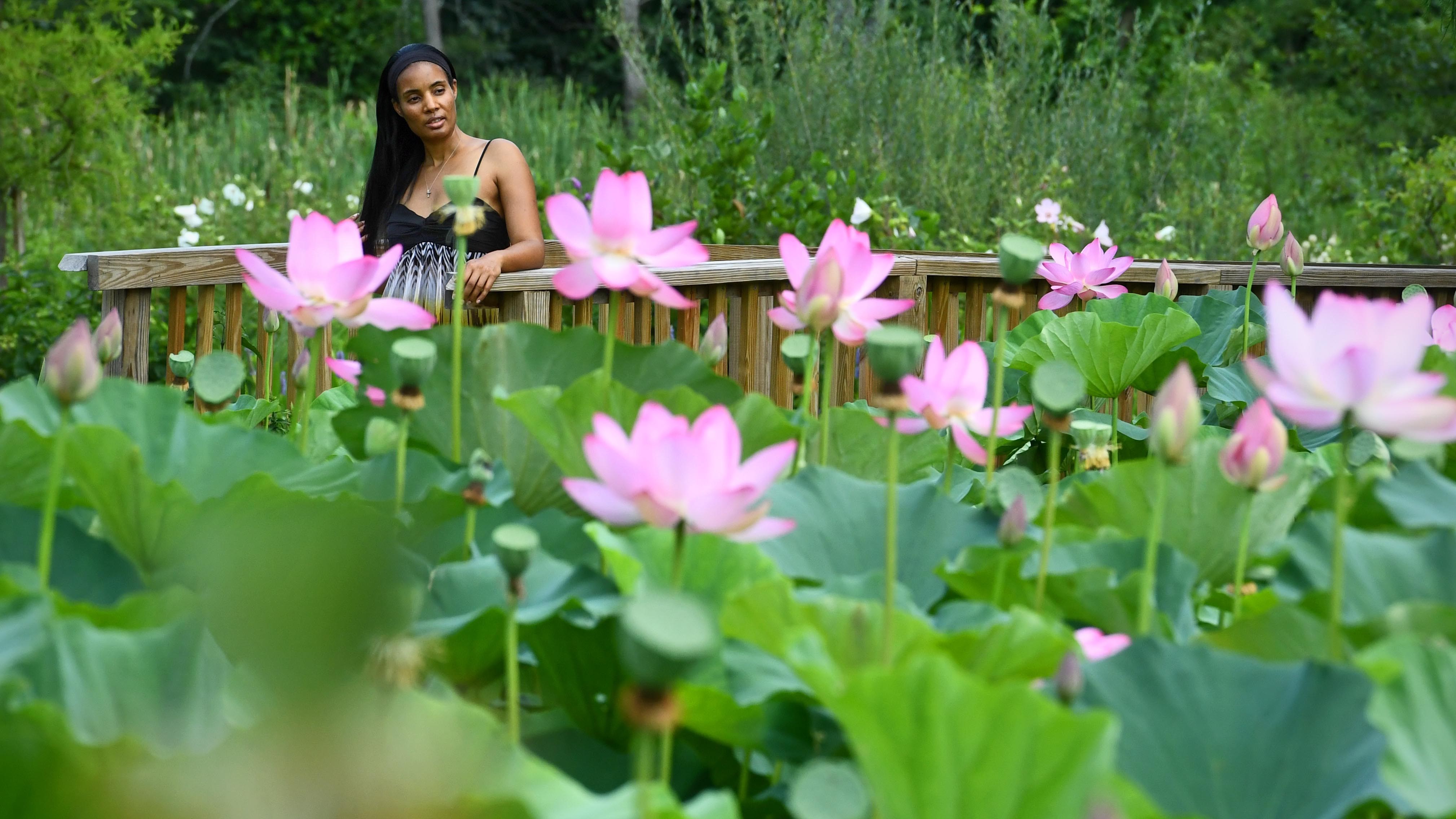
Something is about to stink up the District — and we swear this isn't a joke about politics.
The Amorphophallus titanium, better known as the corpse flower, is a rare, 8-foot-tall flower that blooms for just a few days every few years. The U.S. Botanic Garden has several. One just bloomed, and another is expected to do so soon.
The U.S. Botanic Garden stayed open until 8 p.m. on Monday so everyone could check out the unusual plant.
Those two plants have been on display to the public since July 13, and you can visit them now.
The second corpse flower still hasn't opened, which is lucky for visitors that can't stop by on Wednesday, July 24, when it is closed due to "an official government function."
After Wednesday, through Aug. 30, The Conservatory is open from 11 a.m. to 6 p.m. daily. It's free and no tickets are required.
Why are they called corpse flowers?
Corpse flowers have their morbid name because, when they bloom, the smell is often compared to rotting flesh. The plant features a tall spike, called a spadix, surrounded by a flower that is purple on the inside.
The plant also generates heat when it blooms, allowing the smell to travel further.
That may sound horrendous to humans, but for corpse-attracted pollinators like carrion beetles and flies, it smells like a delicious meal. Once the creepy-crawlies are lured in, they help the plant propagate.
According to the botanic garden, the blooms usually stand for three to four days, and the powerful stench is "mostly just during the first 12-24 hours when the female flowers are receptive to pollination."
The two corpse flowers at the botanic garden that are set to bloom are Accession 2019-0033 and Accession 2007-1033.
Accession 2019-0033 is the fifth bloom from a plant that the botanic garden created in 2017, via pollination, and then planted in 2018. It's about six years old, and this is the first time it has ever bloomed.
Accession 2007-1033 has longer story. In 2018, the plant almost died because of rot. Part of the plant did die in 2020, but "a large number of sprouts came up," and 2007-1033 was the one chosen by the botanical garden's horticulture team to recover the plant.
The plant is four years old, and this is the first bloom since it was recovered in 2021.
Why does the U.S. Botanic Garden have multiple plants known above all else for smelling bad?
Amorphophallus titanum is an endangered species, according to the International Union for the Conservation of Nature. The plants at the botanic garden are there as part of a conservation effort, and to give the public the chance to see this unusual plant up close.
The population of the corpse flower plant has gone down by more than 50% over the past century and a half, according to the IUCN, which estimates that less than 1,000 individual plants still exist in the wild.
Deforestation is the main reason for the plant's decline, the botanic garden's website reads, as logging and oil palm plantations take away the corpse flower's forest habitat.
By keeping corpse flowers in the botanic garden, scientists can study the genetic makeup of the plants. Eventually, they hope to put that information into a database.
That information will help scientists broaden the gene pool and create more diversity among new plants — hopefully keeping the species alive for many more years to come. (We wouldn't want too many corpse flower corpses, after all!)
This weekend isn't the first corpse flower bloom of the year. There were other events in April and May, according to the botanic gardens. You can learn more about those previous blooms, and the plant itself, here.
But if you want to witness a relatively rare botanical event, the plants are already on display to the public, and it's possible that both will bloom anytime between Friday and Monday.
Who knows? It might even be a breath of fresh air compared to some of the other stuff going on around town recently.
Editor's Note (Monday, July 22, 2:15 p.m.): The U.S. Botanic Garden said the flowers may bloom over the weekend of July 19-21, and one was open by Monday morning. This article has been updated.
Editor's Note (Wednesday, July 24, 1:03 p.m.): The second flower still has not opened as of this writing, and the U.S. Botanic Garden is closed all day for an official government function. This article has been updated.
Want to know what's up for your weekend? Sign up for The Weekend Scene, our newsletter about events, experiences and adventures for you and for your family around the DMV.



